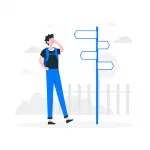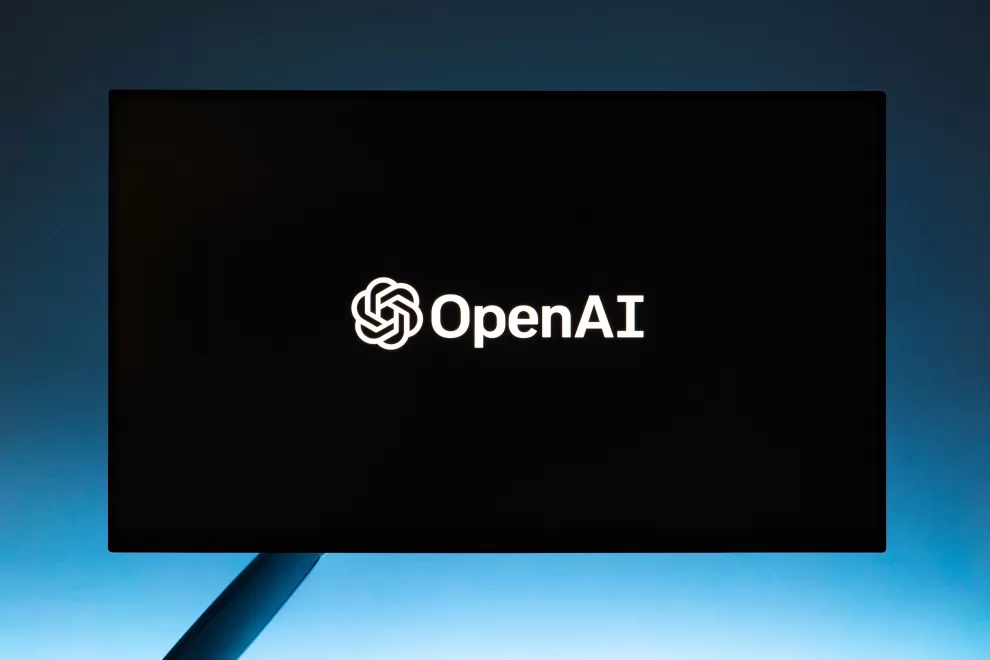DALL·E 2 – How It Works is a journey into the ever-evolving landscape of artificial intelligence and deep learning. This groundbreaking innovation, an advanced iteration of the original DALL·E by OpenAI, has captured significant attention. It boldly pushes the creative boundaries of AI by transforming textual descriptions into stunning images. In this blog, we will delve into the mechanics of DALL·E 2, unraveling its ingenious workings and exploring the immense potential it holds.
Understanding DALL·E 2
DALL·E 2, pronounced as “dolly two,” is the successor to the original DALL·E, which was already a remarkable achievement in AI-driven creativity. It made its debut in early 2021, demonstrating the AI’s ability to understand and conceptualize text, transforming it into visual art.When DALL·E 2 was released in late 2021, this model built upon the foundation laid by its predecessor, offering even more impressive capabilities.
How Does DALL·E 2 Work?
DALL·E 2 operates on a combination of deep learning techniques, which include techniques like generative adversarial networks (GANs) and transformers. These are the fundamental building blocks that enable DALL·E 2 to understand and create images from textual prompts. Here’s a step-by-step breakdown of how it works:
Textual Input:
Users provide DALL·E 2 with a textual description as input. This description can range from simple phrases to complex, detailed explanations of an image concept.
Encoding:
DALL·E 2 encodes the textual input into a format that the model can understand. This encoding is based on transformers, which are highly efficient in processing natural language.
Image Generation:
After understanding the text, DALL·E 2 uses its deep learning capabilities to generate images that match the textual description. It does this by combining the encoded text with a GAN architecture, which helps create highly realistic and novel images.
Creative Interpretation:
What sets DALL·E 2 apart is its ability to creatively interpret textual descriptions. It can generate images that are not just literal representations but also conceptual, imaginative, and often surreal.
Fine-Tuning:
DALL·E 2 has been fine-tuned on a massive dataset of images and text from the internet, enabling it to produce images that align more closely with human expectations and aesthetics.
Applications of DALL·E 2
DALL·E 2’s ability to generate images from text descriptions is a game-changer with a vast array of applications. Here are some additional areas where DALL·E 2 can make a significant impact:
Education:
DALL·E 2 can be a valuable tool in the education sector. In particular, teachers and educators can use it to create visually engaging and informative materials, thereby making learning more engaging for students. For instance,DALL·E 2 – How It Works is complex scientific concepts, historical events, and literary works can be visualized in ways that enhance understanding.
Marketing and Advertising:
Marketers can leverage DALL·E 2 to create attention-grabbing visuals for advertisements, social media campaigns, and branding materials. It offers a faster and more cost-effective way to produce eye-catching content, boosting engagement and sales.
Gaming Industry:
Game developers can utilize DALL·E 2 to design characters, environments, and assets. By describing the elements they envision in the game world, developers can quickly generate visuals, potentially reducing the time and resources required for game design.
Architecture and Urban Planning:
Architects and urban planners can use DALL·E 2 to illustrate architectural concepts and urban design proposals. This can aid in the visualization of future cityscapes and buildings, helping stakeholders better understand and evaluate projects.
Fashion and Apparel Design:
Fashion designers can take advantage of DALL·E 2 to bring their clothing designs to life. By describing their ideas in text, they can receive visual representations that can inform their design process, saving time and resources.
Healthcare:
DALL·E 2 can support the medical field by generating anatomical illustrations, medical diagrams, and patient education materials. It can help in conveying complex medical information to both professionals and patients more effectively.
Historical and Cultural Preservation:
DALL·E 2 can assist in preserving and promoting cultural heritage. Detailed textual descriptions of historical artifacts, sites, or events can be transformed into vivid visuals, aiding in documentation, restoration, and educational purposes.
Also Read: “Generative AI in Cybersecurity: Reinventing Threat Detection and Response“.

Challenges and Ethical Considerations
Misuse of Technology:
One of the foremost concerns is the potential for misuse. DALL·E 2 could be used to create convincing deepfakes, misleading images, or inappropriate content. This raises the question of how to regulate and prevent the misuse of this technology. The power of DALL·E 2 to generate realistic images from text descriptions carries the risk of malicious usage. Deepfakes, which have already been a source of concern, may become even more convincing. Therefore, it is crucial to establish legal and regulatory frameworks to address such issues. Balancing the task of preventing misuse while respecting freedom of expression is a delicate challenge to address.Ethical Implications:
The AI-generated images often blur the line between real and artificial. This challenges traditional notions of authenticity and raises ethical questions regarding consent, intellectual property, and credibility. The ability of DALL·E 2 to create images that seem real can have profound ethical implications. For instance, creating images of individuals who have not consented to be depicted raises significant questions about privacy and consent. Furthermore, DALL·E 2 – How It Works in AI-generated content can challenge the credibility of visuals, making it even more essential to maintain transparency in the use of such technology.
Bias and Fairness:
The data DALL·E 2 is trained on may contain biases present in society. This could result in biased or unfair images generated by the model, potentially reinforcing stereotypes or discrimination. DALL·E 2, like many AI models, relies on data from the internet, which can be biased. If this data contains cultural, gender, or other biases, it may be reflected in the images DALL·E 2 generates. This can perpetuate stereotypes and contribute to societal inequalities, underscoring the need to address bias in training data and algorithms.Privacy Concerns:
As DALL·E 2 becomes more capable, there are legitimate concerns about privacy, particularly when it comes to generating images based on textual descriptions of people or private spaces. Furthermore, generating images from text may intrude on privacy. For example, detailed textual descriptions of individuals or private spaces could lead to AI-generated visuals that breach privacy boundaries. Therefore, safeguarding privacy in an age of advanced AI technologies is a growing concern.
Intellectual Property:
The ownership of images generated by DALL·E 2 is a complex issue. It’s unclear who should own the rights to images produced by AI, especially if they are based on user-provided text. Determining the ownership of images produced by AI is a legal and ethical minefield. If a user provides the text input, who owns the rights to the generated image, DALL·E 2 – How It Works? The issue becomes more complex when AI creates original images that are not directly copied from existing sources.
Quality Control:
Maintaining quality control over AI-generated images can be challenging, as it may be difficult to ensure the accuracy and reliability of the generated content. Ensuring the quality and accuracy of AI-generated content, especially for professional and commercial use, is a challenge. Maintaining a standard of reliability and consistency in the generated images is crucial, as subpar or erroneous content can have real-world consequences.
Conclusion
DALL·E 2 is a testament to the ongoing advancements in artificial intelligence and deep learning. It combines the power of transformers and GANs to generate images that reflect the creativity and imagination of the human mind. As this technology continues to evolve, its applications in various fields are bound to expand, reshaping the way we create and interact with visual content. Nonetheless, responsible use and ethical considerations should always guide the development and utilization of AI tools like DALL·E 2 to ensure they benefit society while mitigating potential risks.


























Add Comment